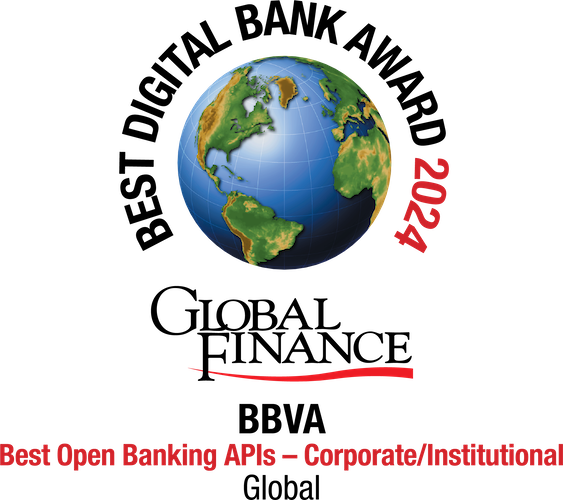Financial data APIs are one of the most interesting financial instruments provided by financial data vendors. They normally can stream real-time, delayed and end-of-the-day information of the Stock Exchange Market, in addition to Historic data. So, financial APIs have been mostly use for Stock Market, so far. But one of them, BBVA, has decided that providing some useful endpoints for the final consumers could be a good idea too.
In this post, we will see an overview on this pioneer initiative of BBVA, apart from a few other well known financial APIs.
Back in 2008, ProgrammableWeb, self-named “The world’s largest API repository”, listed 25 financial APIs in its financial category page. Today, 5 years later, there are more than 200. Most of them are related with the Stock Exchange Market. There are another few of them related with the relatively young phenomenon of Bitcoin protocol and its surrounding world. And another group are payments APIs, or connections with online invoicing services.
Anyway, as financial data volumes grow, better ways to manage the flood of information appear. So, financial APIs seem to be quickly growing tools that provide a questionless value to final customers, startups, financial firms, traders, and investors. Let’s see a few of the popular ones.
Barchart API
Barchart offers Price Data (real-time, delayed, historical or end-of-day), Profiles, Financial Data, Corporate Actions, Leaderboards, Charts, Analytics and much more, via two different sets of tools, including SDKs and APIs. One set for .NET world, and another one for Java world. You can get data in JSON, XML, CSV and RTF formats. About the APIs:
.NET API
-
Written in fully managed C# code
-
.NET 2.0 Framework
-
Server-side component (for institutional customers) as well as client-side (for app developers and independent software vendors)
-
Sample code is provided
-
Source code is available
JAVA API
-
Written in pure Java
-
No external native libraries are needed
-
Server-side component as well as client-side (same uses as .NET API)
-
Sample code is provided
-
Source code is available
You can request access for the API at Barchart on-demand information site. Take into account that this service is not free of charge.
Yahoo API
Yahoo also offers two sets of financial APIs, but they’re aimed to provide news, more than financial data.
You’ll probably missing information here. Reality is you can pull out some financial data from Yahoo! APIs, but the thing is Yahoo! states they don’t have a Finance API for that purpose, because they don’t allow redistribution of finance data.
So, regarding the legal Yahoo! finance APIs, On one hand, you have basic RSS feeds on various finance news topics including top stories, most viewed stories and stories by industry and sector.
On the other hand, you have dynamic RSS feeds for company and industry news based on company ticker symbol. As example, if you wanted last news about Yahoo! and Disney companies, you’d use
http://finance.yahoo.com/rss/headline?s=yhoo,dis
Or if you wanted information about the industry Yahoo! belongs to, you’d use
http://finance.yahoo.com/rss/industry?s=yhoo
You can check all the ticker symbols here.
Please, pay attention to the fact that the Yahoo! Finance RSS Feeds are limited to non-commercial use only. More information at Yahoo! Finance page for developers
FRED API
FRED stands for Federal Reserve of Economic Data. It’s a web service that contains frequently updated US macro and regional economic time series at annual, quarterly, monthly, weekly, and daily frequencies. FRED also aggregates economic data from a variety of sources, most of which are US government agencies.
FRED serves those data via API, in JSON and XML formats. You can use it for free, just registering to get an API key. More information at the API doc page
United States Census Bureau
The Census Bureau provides access to several of its datasets via API. A couple of those datasets could be interested for financial hackers: the economic census and the economic indicators time series.
You can use it for free, but you need to register in order to get an API KEY first. And you need to follow the terms of service, as usual. More information here
Xignite
This is another commercial financial API, like Barchart. They provice 3 groups of APIs:
-
APIs that provide security data for financial instrument
-
APIs that provide live and historic stock quotes
-
APIs that provide information about companies
As said, this isn’t a free service. You can get more information here
Quandl
Quandl is a data platform that provides free access to public financial data sources via API. The amount of available datasets from different sources is really big, and the information provided is also really varied: stock data, general economics data, corporate earnings, country statistics, commodities, etc.
Formats supported, as usual, are XML, JSON and CSV. You need to register, to get API KEYs, but up to 50 anonymous requests per day are also allowed. The speed limit is 5000 requests per hour.
More information here
BBVA Data API
Of course, as we said at the beginning of the post, we’re going to talk about the recent BBVA Data API, coming from the Spanish bank BBVA.
The API provides agreggrated and anonymized data of all the credit card transactions made between November 2013 and April 2014 in the cities of Ciudad de Mexico, Guadalajara and Monterrey.
The API has been released as a pioneer initiative aimed at foster innovation around big data and promoting an open culture of continuous exchange between BBVA and the developer communities around the world.
You can get further information about the BBVA Data API here
Conclussions
If you are a developer, and wants to start playing with financial data, you could go for the free to use APIs from BBVA, United States Census Bureau, Quandl, FRED or Yahoo!. If you’re ready to pay for a more complete service, you have options like Xignite or Barchart.
In any case, there are plenty of options waiting for you. It’s time to hack!
Find out more about BBVA’s APIs here.

























